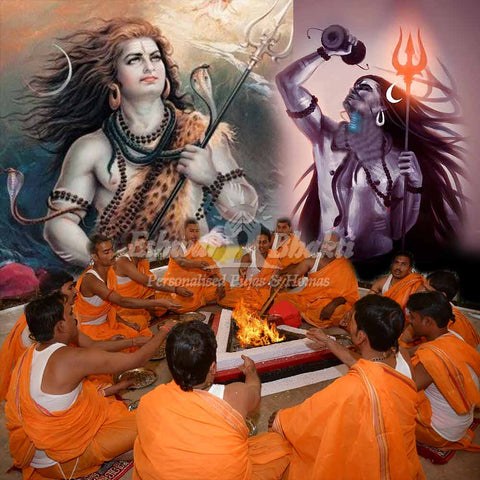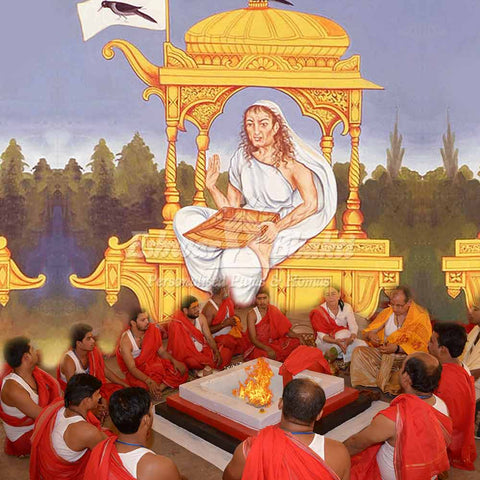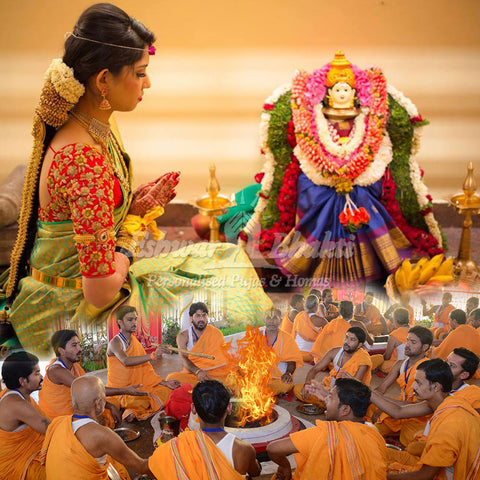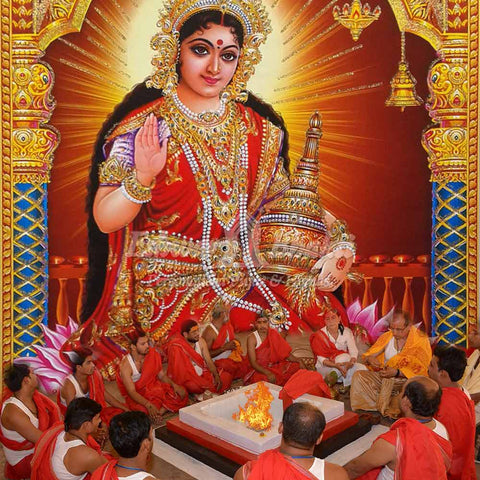Why do we do Pradikshna?
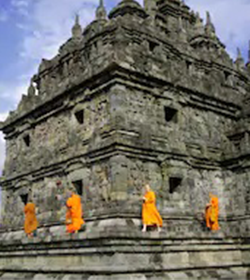 Pradikshna is a Sanskrit word, which means 'to the right.' In Hinduism, Buddhism, and several other religious traditions in India, it refers to the circumambulation of a sacred place. It is also known as Parikarma, which means 'the path around something." Traditionally, a person undertakes Pradikshna as a symbol of prayer, and one would go around a temple in a clockwise direction in the Pradiksna path (which is the path around the temple marked with Bali stones). Apart from temples, devotees also circumambulate around Agni or fire (as part of Hindu marriage ceremonies), peepal trees, and tulsi plants.
Pradikshna is a Sanskrit word, which means 'to the right.' In Hinduism, Buddhism, and several other religious traditions in India, it refers to the circumambulation of a sacred place. It is also known as Parikarma, which means 'the path around something." Traditionally, a person undertakes Pradikshna as a symbol of prayer, and one would go around a temple in a clockwise direction in the Pradiksna path (which is the path around the temple marked with Bali stones). Apart from temples, devotees also circumambulate around Agni or fire (as part of Hindu marriage ceremonies), peepal trees, and tulsi plants.
In Sivapurana, Pradikshna is a rite performed by a devotee by chanting 'Ma No Mahanatam.' In the same text, there is a description of how Brahma asked Naradha to approach Siva and Sati to take part in sacrificial rites, as mentioned in the Gihyasutras. Brahma asked Naradha to perform Pradiksna around Agni before he returned.
Another mythical narrative associated with Pradikshna is how Goddess Parvati asked her sons, Kartikeyan and Ganesha, to take two circles of the world to muster worldly knowledge. When Kartikeyan took years to complete Pradikshna, Ganesha circled His mother instead. Ganesha's action signified the importance of the mother figure and Paradikshna in Hinduism.
Significance of Pradikshna: Circumambulation has different importance in various cultures. There are several mythologies and legends associated with the benefits of Pradikshna. Here we will be discussing the religious and scientific significance of performing Pradikshna.
Religious Significance: Pradikshna around the temple, Agni, peepal tree, and tulsi plant are auspicious in Hinduism. They are known to purify our minds and bodies. It is essential to note that one can circumambulate only in a clockwise direction. It is because our right side will be facing the Sanctum Sanctorium, and movement in such a manner will aid in the intermingling of the Divine and the Self. There are other religious significances as well.
1. While walking around the temple, one can gain peace of mind as well as evade negativity.
2. Pradikshna can permit us to take a step further into the energy system. Our body absorbs energy when our hair is wet. It is more receptive when our clothes are damp as well. Kalyanis or Kulams are the waterbodies in temples, constructed, keeping in mind the importance of taking a dip before entering into the temple premises.
3. As per Srauta-Sutras and Gobhila-Ghura-Sutra, Pradikshna can remove evil forces and is an imitation of the daily movement of the Earth around the sun.
4. Pradikshna is equivalent to giving homage to the deity and the temple.
5. In a Siva temple, one can only complete Pradikshna up to the gomuki or the outlet of Abhisheka water. A devotee has to turn around and move in the anti-clockwise direction. Worshippers are also not allowed to go beyond the Bali stones when they are moving around the temple.
These are some of the religious significances associated with Pradikshna. They are integral parts of paying respect to the deities in Hinduism.
Scientific Significance: Temples were built by giving due attention to science and geographical features. You can find more temples in the Northern Hemisphere up to the 30-degree latitude of the Equator. It is because these places have intense consecration. In the South, temples are scientifically constructed.
Temples are a microcosmic depiction of the Universe. The sun acts as the center and the planets as bodies rotating as well as revolving around it. In temples, the sanctum sanatorium is equivalent to the sun. The Pradikshna done by the devotees is similar to the movement of the planets. By circumambulating around the temple, we gain positivity and can revitalize our energy system. Other scientific reasons associated with Pradikshna are -
1. A Temple has three layers. The first layer has a garden with medicinal plants, herbs, and trees. When you move around the area, positive energy flows through your body, which further helps in removing any imbalances. The breathing of the fragrances can also heal our mind and body from different ailments.
2. In the second layer of the temple, one may find statues and sculptures of the pleasures of worldly life. When you look at them, you can transcend your mind from all your desires and fantasies.
3. In the third layer of the temple, you are close to the divine entity. When you reach the sanctum sanatorium, your mind gets purified due to the energy flowing from the holy figure.
4. Temple architecture is a pure depiction of the solar system. As the planets revolve in a clockwise direction to absorb the sun's energy, devotees move around the temple to gain vitality from the shrine.
5. Pradikshnas around the Ashwat or peepal tree has great medicinal value as they are the only trees that emit oxygen for 24 hours. They can help us overcome ailments, including infertility issues. The tulsi plant also has similar properties and aids in improving our health.
Pradikshna can be highly beneficial in overcoming the Vatta, Pitta, and Kapha imbalances in our bodies. It can free your mind and also aid in moving forward into the realm of Ultimate Reality.
Types of Pradikshna: There are different types of Pradikshnas based on the manner you perform it. Many people take vows to do Pradikshnas at times of need. Atma Pradikshna, Giri Valam, Adi Pradikshna, Mutti Podudal, and Agna or Shayana Pradikshna are the types of Pradikshna.
1. Atma Pradikshna- It is the circumambulation inside one's body. Here, you go around your own self. Atma Pradikshna focuses on the concept of the presence of the divine within us.
2. Giri Valam - It is the Pradikshna of a mountain or hill.
3. Adi Pradikshna - Here, a devotee goes around the shrine by taking small steps with the head of a foot placed against the tip of the other.
4. Agna Pradikshna - It is also known as Shayana Pradiksha, where a devotee lies flat on the ground and rolls around the temple. Friends or family help devotees in moving forward. One may perform Shayana Pradikshna with a wet body with folded hands facing the deity.
5. Mutti Podudal - It is a Pradikshna done on knees by the devotees.
The number of Pradikshnas for each deity varies. For temples with Ganesha as their idol, one might do one or three Pradikshna. In Hanuman temples, it is three. In temples with Vishnu as the idol, one has to take either three or four Pradikshna. In Ayyapa temples, it is five, and around a peepal tree, one has to take seven Pradikshnas.
Pradikshnas, thus, are vital symbols in Hinduism. They have to be performed slowly with folded hands by visualizing the deity in our hearts.

